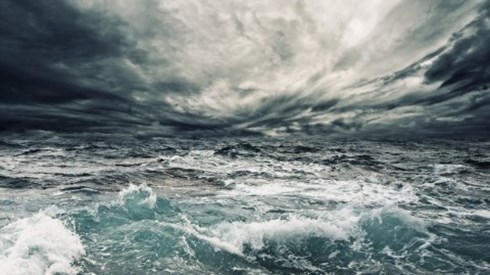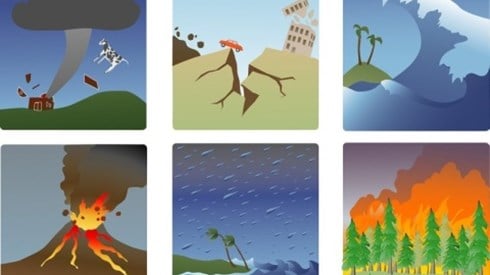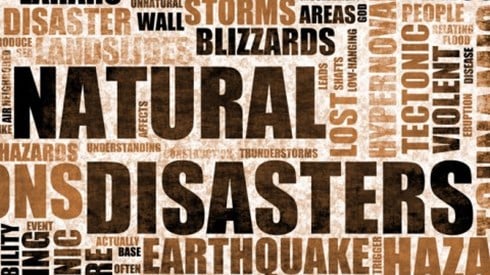2020's Catastrophes Underscore Need To Plan for Coinciding Perils

March 15, 2021

With an above-average number of natural disasters and the worst global pandemic since 1918, 2020 highlighted the need to invest in risk management planning for the possibility of coinciding extreme events.
Aon's recent Weather, Climate & Catastrophe Insight 2020 Annual Report notes that while the year wasn't a record-setter in terms of financial losses caused by natural disasters, there were significant records set on a regional, peril, or event-level basis.
The 2020 Atlantic hurricane season, for example, saw a record 30 named storms with 13 hurricanes, 6 of those major hurricanes, the report says. The season set an additional record with 12 of those storms—including 6 hurricanes—making landfall in the United States.
Despite the high volume of hurricane activity, 2020's costliest US peril was actually severe convective storms, says the Aon report. With a historic derecho that brought devastation to the Midwest in August, including 140 mph winds in Cedar Rapids, Iowa, 2020's severe storms led the year to surpass 2011 as the costliest severe weather season on record, according to the Aon report.
Wildfires in the western United States also set a modern-era record for the most acres burned and were responsible for the third-highest insurance payouts, behind 2017 and 2018, Aon says.
Elsewhere in the world, heavy rains in some areas of south Asia led to the worst monsoon season flooding in years, metropolitan areas in Australia experienced multiple hailstorms, South America experienced droughts, and Europe experienced its costliest winter windstorm in years, the Aon report notes.
Overall, 2020 was marked by 416 notable natural disaster events, and the year's $268 billion economic loss was 10 percent above the 21st Century's average, while the $97 billion in insured losses were 40 percent above the average, the report says. Of 2020's insured catastrophe losses, 76 percent were in the United States.
The year's 53 billion-dollar economic loss events were the second highest on record, according to Aon, while the 28 billion-dollar insured loss events were the greatest number on record. The 53 billion-dollar loss events were above the average of 34 since 2000 and the 43 that occurred in 2019.
Also significant, according to the Aon report, 2020 experienced the year's hottest ever temperature recorded above the Arctic Circle, as well as the second warmest year on record for land and ocean temperatures, going back to 1880.
Economic losses resulting solely from weather disasters in 2020 totaled $258 billion, Aon reports, making the year the fifth costliest in terms of weather-related natural disasters after adjusting for inflation.
Among individual perils, the costliest in 2020 was tropical cyclones, causing nearly $78 billion in losses. The costliest storm outside the North Atlantic was Cyclone Amphan, which hit India and Bangladesh, Aon says. The Philippines experienced two disastrous storms during the year, according to the report, including Typhoon Goni, which made landfall at 195 mph, the strongest landfalling storm ever recorded on the planet.
Inland flooding was the next costliest peril in 2020, Aon reports, responsible for $76 billion in losses. Floods in China, India, and Japan were responsible for $50 billion of that amount.
The Aon report cites 2020 economic losses from severe convective storms as particularly noteworthy. Those storms caused $63 billion in economic losses, topping the old record of $53 billion set in 2011. The year's losses were in line with the increasing trend for the peril, the report said, with 80 percent of the year's losses from severe convective storms occurring in the United States.
Wildfires were responsible for $19 billion in 2020 economic losses, the report says, with 5 individual billion-dollar fires in the western United States, a new record for the country.
In terms of 2020's insured catastrophe losses, the year was the fifth costliest ever for public and private insurance entities, Aon says, and saw a 26 percent increase in losses from the prior year.
Weather-related losses accounted for 99 percent of the year's natural disaster insured losses, according to the report. Aon attributes that development to relatively few severe earthquakes during the year and to the fact that many disasters occurred in regions with relatively low levels of insurance take-up.
Approximately 36 percent of global economic losses were covered by insurance, with events in the United States accounting for 76 percent of the insured total. All of the year's 10 largest insured loss events occurred in the United States, according to the Aon report, with those disasters accounting for 40 percent of global insured disaster losses in 2020.
The Aon report notes that despite the record-breaking Atlantic hurricane season, only Hurricane Laura generated $10 billion in losses. Three other tropical cyclone events—Sally, Isais, and Zeta—were multibillion-dollar events.
Four US severe convective storm events were included among the ten costliest insured loss events, led by the August storms that included the Midwest derecho, which was the year's second greatest insured disaster loss behind Hurricane Laura, causing $8.3 billion in insured losses. The derecho was considered the single costliest thunderstorm event ever recorded, Aon says.
Severe convective storms were the primary source of 2020 insured disaster losses worldwide, according to Aon, representing 43 percent of the $42 billion total and including 14 individual billion-dollar insured loss events, of which 12 were in the United States.
The year saw 28 individual billion-dollar insured loss events, the largest total ever, Aon says, with 22 occurring in the United States.
The Aon report notes that the COVID-19 pandemic challenged government officials looking to prepare for and recover from disasters in 2020, as social distancing requirements limited capacity at evacuation facilities or temporary post-disaster housing. The pandemic also disrupted the claims process, leading many insurers and reinsurers to look to new technologies such as drones to assist with the process.
"Perhaps the biggest opportunity in the aftermath of 2020 surrounds the topic of risk management," the Aon report says. "COVID-19 highlighted areas which need considerable improvement around both planning for and anticipating various scenarios."
Natural perils can't be eliminated, the report notes, but the physical and human risk can be reduced or mitigated by properly reducing vulnerability.
March 15, 2021

